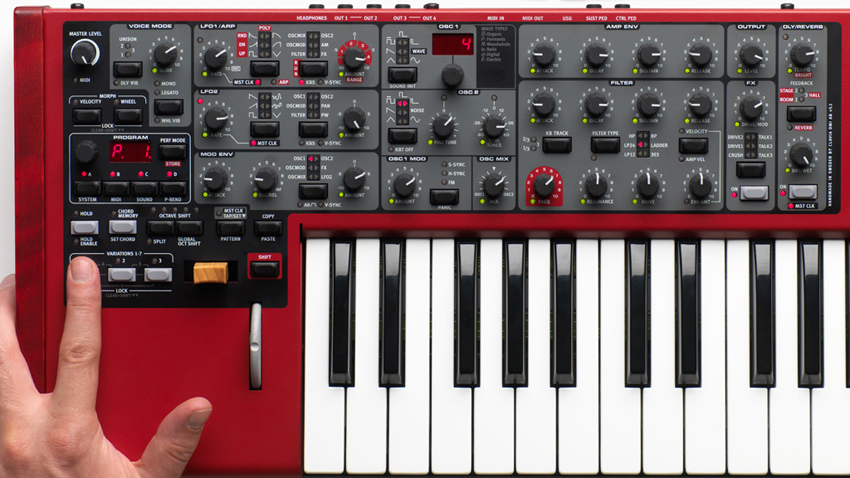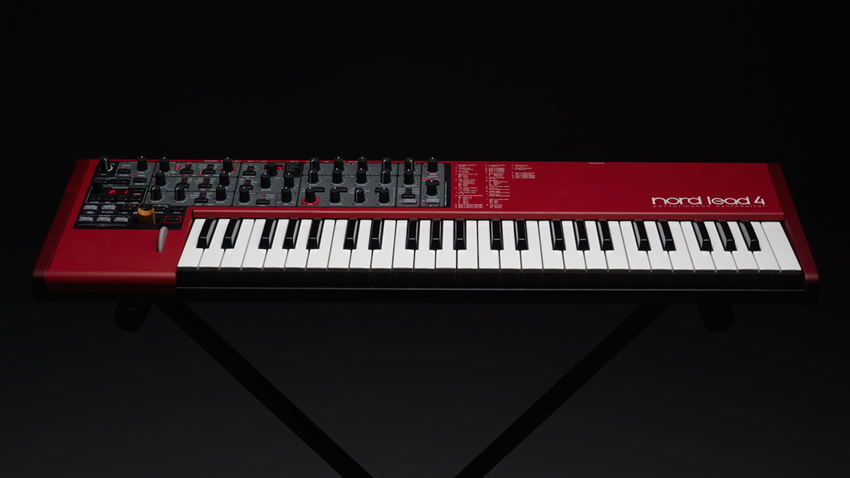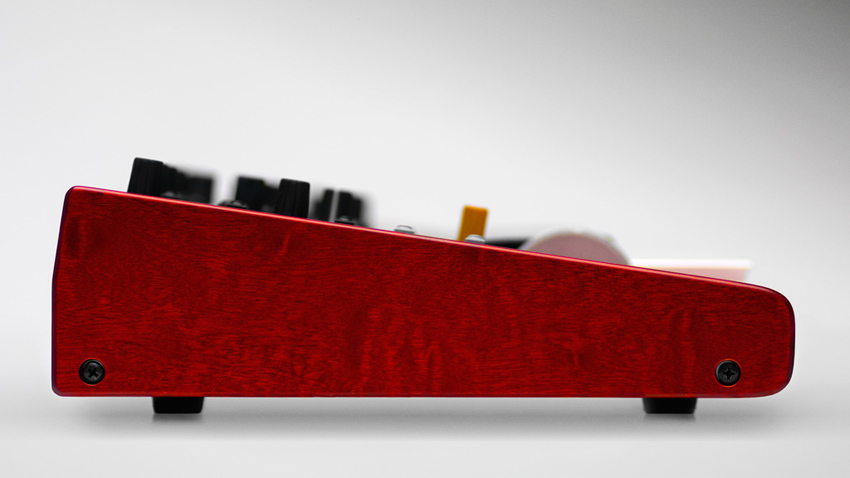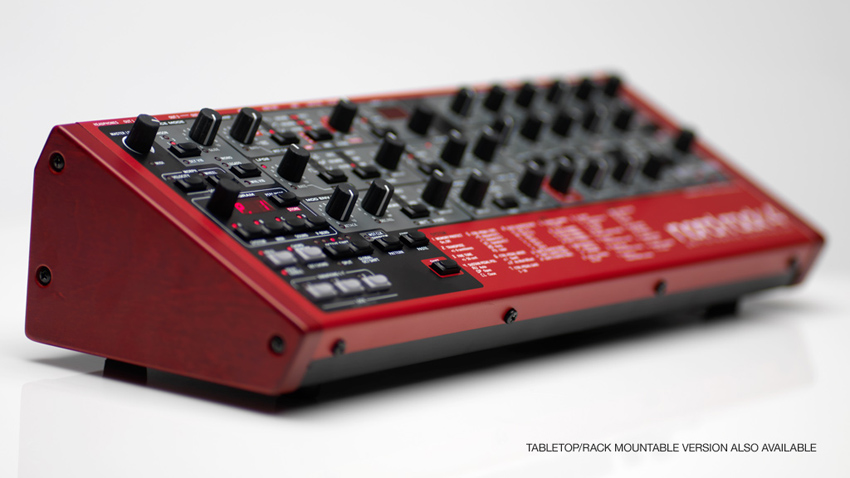Musikmesse 2013: Nord Lead 4 revealed by Clavia
Update: now with video demo goodness

Clavia Nord Lead 4

Clavia Nord Lead 4

Clavia Nord Lead 4

Clavia Nord Lead 4 tabletop/rack
MUSIKMESSE 2013: We knew that Clavia had a new synth coming at Musikmesse, and now we know that it's none other than the Nord Lead 4. This successor to the Lead 3 is a 2-oscillator, 4-part multitimbral virtual analogue subtractive instrument that also boasts Wavetable and FM capabilities.
The sound engine here is said to be all-new, while the True Voice Unison mode enables you to stack up to four oscillators per voice for super-thick sounds. A new filter section has been implemented too.
Elsewhere, new Morph and Variation controls enable you to edit sounds quickly and you get Crush, Talk, Distortion, Reverb and Delay effects. There are two LFO/Arpeggiator sections and a Mod Env section with flexible routing possibilities.
The standard Nord Lead 4 (£1549) sports a 49-key velocity-sensitive keyboard, but a tabletop/rack version (price TBC) is also in the works. Look out for the two models in May and August respectively.
More below or on the dedicated Clavia Nord Lead 4 website.
Clavia Nord Lead 4 official information
With innovative new performance features, advanced layering and synchronization possibilities, new filter types and on-board effects, the Nord Lead 4 is a synthesizer dream come true.
Nord Lead 4 is a 4-part multi-timbral synthesizer sporting a brand new 2-oscillator virtual analog sound engine with 2x oversampling. In addition to the classic analog waveforms there's a Wavetable mode with unique new Formant Wavetables. Frequency Modulation and Hard/Soft sync options are available for mutilating your sound further and the True Voice Unison mode can stack up to four oscillators per voice for really thick, beefy leads and pads.
Get the MusicRadar Newsletter
Want all the hottest music and gear news, reviews, deals, features and more, direct to your inbox? Sign up here.
The filter section boasts Low Pass (12/24dB), High Pass, and Band Pass filters and also stunning new simulations of two transistor and diode ladder filters capturing the squeaky, dirty character of the originals. A dedicated filter overdrive can distort your sound before it passes through the effect section.
The new Variation buttons let you override almost any parameter of the synthesizer, instantaneously. Ever wanted to change LFO speed, Modulation routings and reverb amount - all at once, in the middle of a sound? With the Nord Lead 4 you can! With 7 assignable variations per program Nord Lead 4 gives you creative freedom to warp and improvise your sound live, both rhythmically and sonically and thanks to the Master Clock Synchronization, it can be done in perfect sync to other layers or an external MIDI Clock.
All 4 slots have dedicated effect sections with delay, reverb, tube amp simulated overdrive, a Talk effect modelled after a vocal tract and a sample rate reducing Crush effect.
The Nord Lead 4 is also available as a Tabletop/Rack version, the Nord Lead 4R.
Key features
- 4-part multi-timbral with 4 separate outs.
- 2-Oscillator Virtual Analog Subtractive synthesis with Frequency Modulation, Hard and Soft Sync and True Voice Unison.
- Morph and Variation performance controls.
- Wavetable synthesis, including unique Formant Wavetables.
- 12/24 dB Low-pass, High-pass, Band-pass filters section plus transistor and diode ladder filter simulations.
- 2 LFO/Arpeggiator sections and Mod Env section with flexible routing possibilities.
- LFO, Arpeggiator and Delay can be synchronized to the Master Clock (or external MIDI-Clock).
- Crush, Talk and Distortion, Reverb, Delay effects (available per slot)
- 2x oversampled sound engine.
- 49-key velocity sensitive keyboard (C-C) (Not Nord Lead 4R).
- USB MIDI.



I’m the Deputy Editor of MusicRadar, having worked on the site since its launch in 2007. I previously spent eight years working on our sister magazine, Computer Music. I’ve been playing the piano, gigging in bands and failing to finish tracks at home for more than 30 years, 24 of which I’ve also spent writing about music and the ever-changing technology used to make it.
Don’t miss this record-breaking 100-Hour DJ marathon livestream fundraiser featuring 90 artists
“It's our passion to bring songwriting back to the historic heart of the West End”: An all-new, star-studded writer’s retreat is aiming help make history in London’s iconic Denmark Street









